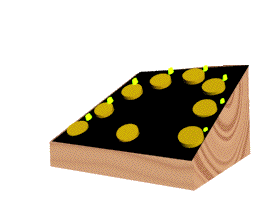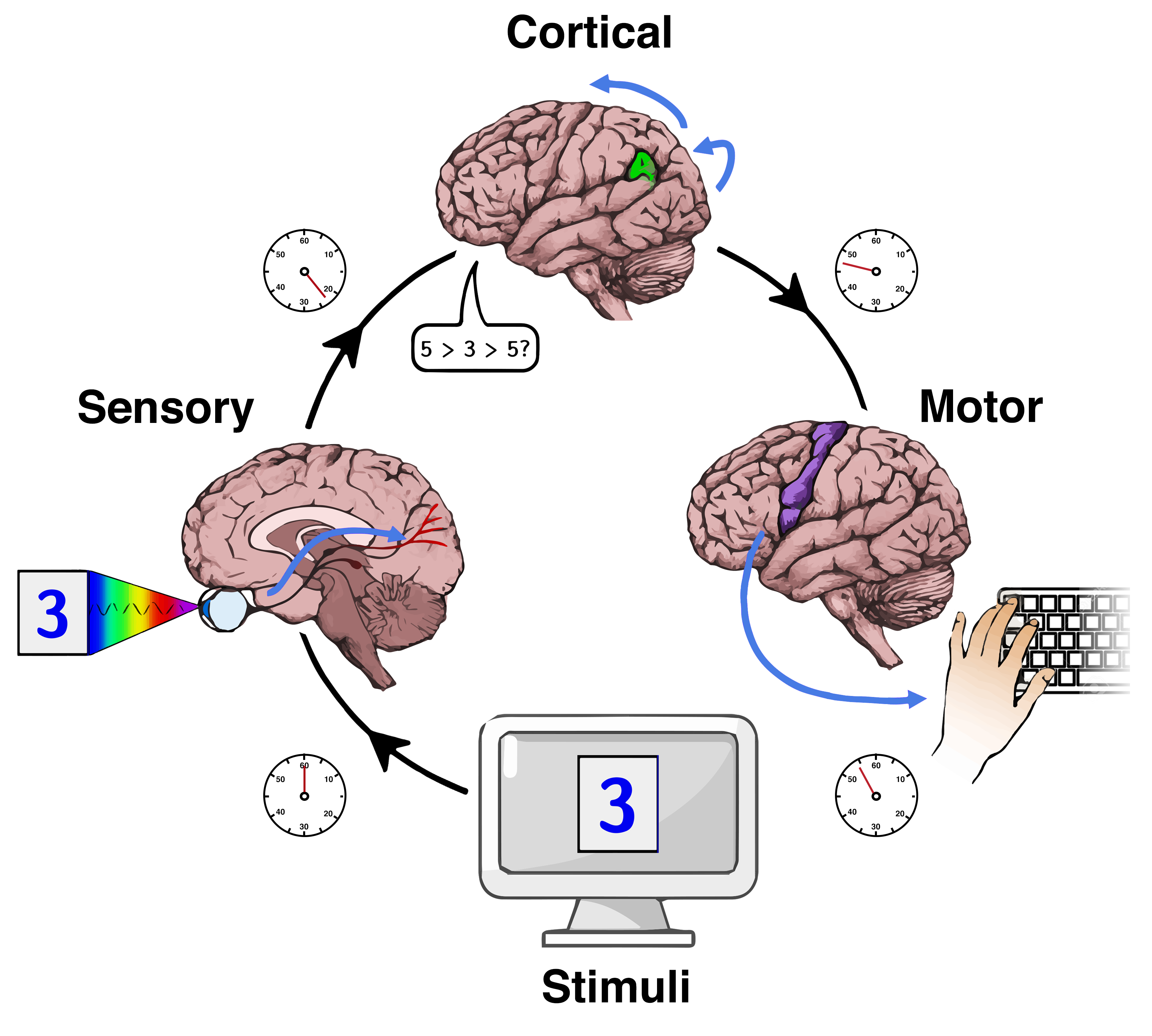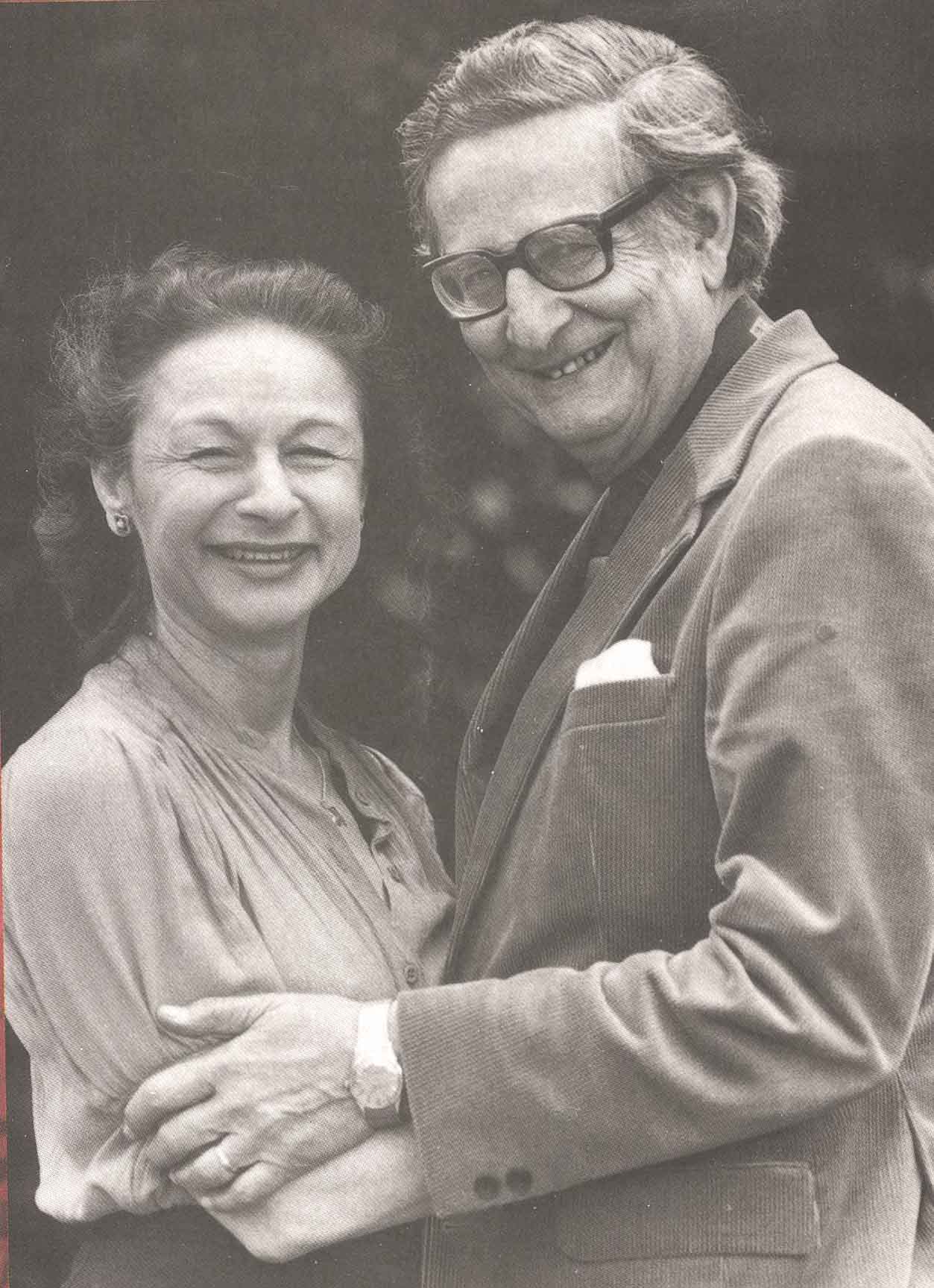|
Odd Man Out Test
The Odd-Man-Out Reaction Time test (OMO RT) is a test of reaction times that uses Arthur Jensen's testing apparatus, the Jensen box. The box is normally used for measuring choice reaction times in which the participant in the experiment is tested on their ability to recognize which of the eight lights of the Jensen box is illuminated, as quickly as possible. However, in the Odd Man Out Reaction Time test, three lights are illuminated in each trial. Two are close together and the other further apart; the individual being tested must identify this third light. The Odd-Man-Out Reaction Time test correlates with " Intelligent Quotients (IQ) in the range of 0.30 to 0.60, a reliable and substantial effect." This correlation range is typically higher than the correlations to IQ in other reaction-time tests. Experiments In 1986, Frearson and Hans Eysenck conducted an experiment in which they assessed participants on various intelligence tests including Jensen's Choice Reaction Time , I ... [...More Info...] [...Related Items...] OR: [Wikipedia] [Google] [Baidu] |
Jensen Box
The Jensen box was developed by University of California, Berkeley psychologist Arthur Jensen as an experimental apparatus for measuring choice reaction time (RT) and individual differences in intelligence. Design and measurement The standard Jensen box is approximately 12 by 20 inches in size with a sloping face. Eight buttons are arrayed in a semicircle with a 'home' key in the lower center. Above each response button is a small LED light. Following an auditory warning tone and a delay, one of the lights is illuminated and the participant releases their finger from the home button. Participants then move to initiate a button press at the illuminated location as quickly as possible. RT is measured in two different ways: the time elapsed between the light signal and the home button release, and the time between the home button release and the target button press. These separate measures were initially conceptualized as assessing "decision time" and "movement time," respectively. ... [...More Info...] [...Related Items...] OR: [Wikipedia] [Google] [Baidu] |
Reaction Time
Mental chronometry is the scientific study of processing speed or reaction time on cognitive tasks to infer the content, duration, and temporal sequencing of mental operations. Reaction time (RT; sometimes referred to as "response time") is measured by the elapsed time between stimulus onset and an individual's response on elementary cognitive tasks (ETCs), which are relatively simple perceptual-motor tasks typically administered in a laboratory setting. Mental chronometry is one of the core methodological paradigms of human experimental, cognitive, and differential psychology, but is also commonly analyzed in psychophysiology, cognitive neuroscience, and behavioral neuroscience to help elucidate the biological mechanisms underlying perception, attention, and decision-making in humans and other species. Mental chronometry uses measurements of elapsed time between sensory stimulus onsets and subsequent behavioral responses to study the time course of information processing in th ... [...More Info...] [...Related Items...] OR: [Wikipedia] [Google] [Baidu] |
Arthur Jensen
Arthur Robert Jensen (August 24, 1923 – October 22, 2012) was an American psychologist and writer. He was a professor of educational psychology at the University of California, Berkeley. Jensen was known for his work in psychometrics and differential psychology, the study of how and why individuals differ behaviorally from one another. He was a major proponent of the hereditarian position in the nature and nurture debate, the position that genetics play a significant role in behavioral traits, such as intelligence and personality. He was the author of over 400 scientific papers published in refereed journals and sat on the editorial boards of the scientific journals ''Intelligence'' and ''Personality and Individual Differences''. Jensen was controversial, largely for his conclusions regarding the causes of race-based differences in IQ. A 2019 study found him to be the most controversial intelligence researcher among 55 persons covered. Early life Jensen was born Augus ... [...More Info...] [...Related Items...] OR: [Wikipedia] [Google] [Baidu] |
Correlation
In statistics, correlation or dependence is any statistical relationship, whether causal or not, between two random variables or bivariate data. Although in the broadest sense, "correlation" may indicate any type of association, in statistics it usually refers to the degree to which a pair of variables are ''linearly'' related. Familiar examples of dependent phenomena include the correlation between the height of parents and their offspring, and the correlation between the price of a good and the quantity the consumers are willing to purchase, as it is depicted in the so-called demand curve. Correlations are useful because they can indicate a predictive relationship that can be exploited in practice. For example, an electrical utility may produce less power on a mild day based on the correlation between electricity demand and weather. In this example, there is a causal relationship, because extreme weather causes people to use more electricity for heating or cooling. However ... [...More Info...] [...Related Items...] OR: [Wikipedia] [Google] [Baidu] |
Hans Eysenck
Hans Jürgen Eysenck (; 4 March 1916 – 4 September 1997) was a German-born British psychologist who spent his professional career in Great Britain. He is best remembered for his work on intelligence and personality, although he worked on other issues in psychology. At the time of his death, Eysenck was the most frequently cited living psychologist in the peer-reviewed scientific journal literature. Eysenck's research purported to show that certain personality types had an elevated risk of cancer and heart disease. Scholars have identified errors and suspected data manipulation in Eysenck's work, and large replications have failed to confirm the relationships that he purported to find. An enquiry on behalf of King's College London found the papers by Eysenck to be "incompatible with modern clinical science". In 2019, 26 of his papers (all coauthored with Ronald Grossarth-Maticek) were considered "unsafe" by an enquiry on behalf of King's College London. Fourteen of his papers ... [...More Info...] [...Related Items...] OR: [Wikipedia] [Google] [Baidu] |
Spatial Relationships
A spatial relationD. M. Mark and M. J. Egenhofer (1994), "Modeling Spatial Relations Between Lines and Regions: Combining Formal Mathematical Models and Human Subjects Testing"PDF/ref> specifies how some object is located in space in relation to some reference object. When the reference object is much bigger than the object to locate, the latter is often represented by a point. The reference object is often represented by a bounding box. In Anatomy it might be the case that a spatial relation is not fully applicable. Thus, the degree of applicability is defined which specifies from 0 till 100% how strongly a spatial relation holds. Often researchers concentrate on defining the applicability function for various spatial relations. In spatial databases and geospatial topology the ''spatial relations'' are used for spatial analysis and constraint specifications. In cognitive development for walk and for catch objects, or for understand objects-behaviour; in robotic Natural Feature ... [...More Info...] [...Related Items...] OR: [Wikipedia] [Google] [Baidu] |
Intelligence
Intelligence has been defined in many ways: the capacity for abstraction, logic, understanding, self-awareness, learning, emotional knowledge, reasoning, planning, creativity, critical thinking, and problem-solving. More generally, it can be described as the ability to perceive or infer information, and to retain it as knowledge to be applied towards adaptive behaviors within an environment or context. Intelligence is most often studied in humans but has also been observed in both non-human animals and in plants despite controversy as to whether some of these forms of life exhibit intelligence. Intelligence in computers or other machines is called artificial intelligence. Etymology The word ''intelligence'' derives from the Latin nouns '' intelligentia'' or '' intellēctus'', which in turn stem from the verb '' intelligere'', to comprehend or perceive. In the Middle Ages, the word ''intellectus'' became the scholarly technical term for understanding, and a translation f ... [...More Info...] [...Related Items...] OR: [Wikipedia] [Google] [Baidu] |
Stimulus (psychology)
In psychology Psychology is the scientific study of mind and behavior. Psychology includes the study of conscious and unconscious phenomena, including feelings and thoughts. It is an academic discipline of immense scope, crossing the boundaries betwe ..., a stimulus is any object or event that elicits a sensory or behavioral response in an organism. In this context, a distinction is made between the ''distal stimulus'' (the external, perceived object) and the ''proximal stimulus'' (the stimulation of sensory organs). *In perceptual psychology, a stimulus is an energy change (e.g., light or sound) which is registered by the senses (e.g., vision, hearing, taste, etc.) and constitutes the basis for perception. *In behavioral psychology (i.e., classical conditioning, classical and operant conditioning, operant conditioning), a stimulus constitutes the basis for behavior. The stimulus–response model emphasizes the relation between stimulus and behavior rather than an anim ... [...More Info...] [...Related Items...] OR: [Wikipedia] [Google] [Baidu] |
Speed Of Processing
Mental chronometry is the scientific study of processing speed or reaction time on cognitive tasks to infer the content, duration, and temporal sequencing of mental operations. Reaction time (RT; sometimes referred to as "response time") is measured by the elapsed time between stimulus onset and an individual's response on elementary cognitive tasks (ETCs), which are relatively simple perceptual-motor tasks typically administered in a laboratory setting. Mental chronometry is one of the core methodological paradigms of human experimental, cognitive, and differential psychology, but is also commonly analyzed in psychophysiology, cognitive neuroscience, and behavioral neuroscience to help elucidate the biological mechanisms underlying perception, attention, and decision-making in humans and other species. Mental chronometry uses measurements of elapsed time between sensory stimulus onsets and subsequent behavioral responses to study the time course of information processing in ... [...More Info...] [...Related Items...] OR: [Wikipedia] [Google] [Baidu] |
Mental Processing
The mind is the set of faculties responsible for all mental phenomena. Often the term is also identified with the phenomena themselves. These faculties include thought, imagination, memory, will, and sensation. They are responsible for various mental phenomena, like perception, pain experience, belief, desire, intention, and emotion. Various overlapping classifications of mental phenomena have been proposed. Important distinctions group them according to whether they are ''sensory'', ''propositional'', ''intentional'', ''conscious'', or ''occurrent''. Minds were traditionally understood as substances but it is more common in the contemporary perspective to conceive them as properties or capacities possessed by humans and higher animals. Various competing definitions of the exact nature of the mind or mentality have been proposed. ''Epistemic definitions'' focus on the privileged epistemic access the subject has to these states. ''Consciousness-based approaches'' give prima ... [...More Info...] [...Related Items...] OR: [Wikipedia] [Google] [Baidu] |





